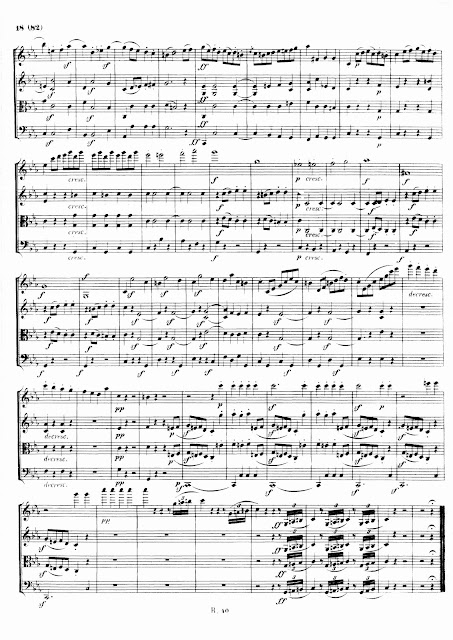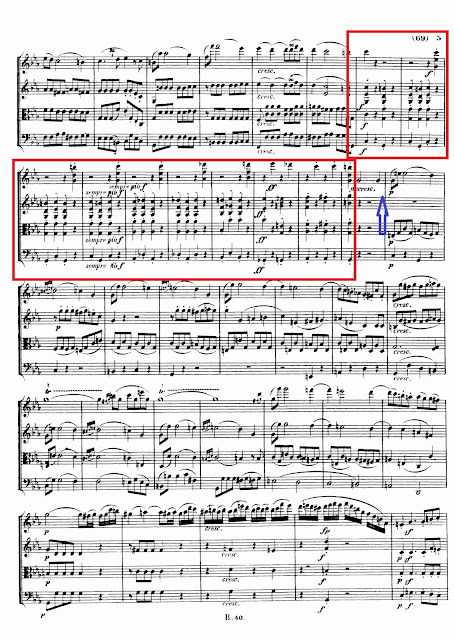CDLXV. BEETHOVEN, Ludwig van (1770-1827)
Unusually, no sketches survive from No. 4 -- which was probably the last of set of six to be composed. He received 400 florins from Prince Franz Joseph von Lobkowitz, who became one of Beethoven's greatest patrons.
This is the only quartet in the set in a minor key.
First movement
The initial theme is dark and serious, as C Minor tends to be. While the lower instruments keep a steady 8th-note pulse, the first violin soars higher and higher.
But most outstanding are the crushing chords of I-V-I-V-I and then reversed V-I-V-I-V. A short episode precedes the second theme.
The second theme (a variation on the first) is presented in the relative major (E-Flat):
The exposition (after the repeat) ends unexpectedy on a C-Sharp -- followed by a strong V-I cadence in the new key, G Minor.
By means of a Neopolitan chord (D-Flat Major), Beethoven dips down to C Major. The "crushing chords" are now I-IV-I, etc. The cello takes up the melody in its upper range.

Now those chords stretch out with cadences on C Minor, A-Flat, D-Flat, B-Flat and finally a dominant G returning to C Major.
Beethoven can add the tiniest detail to perk up the ears: Here it is the insertion of a new rhythm -- dotted 16th-32nd ...
Third movement
Minuet in name only. Try to dance to this and you'd break an ankle. The off-beat sfzordanos gives the music an off-kilter feel.
In the trio, the first violin plays accompanying triplets, while the second violin trades phrases with the lower strings.
Fourth movement
A rousing rondo with repeats ... this always sounds like someone slipping on the ice ...

The prestissimo coda is filled with excitement, stops and starts, and those lovely high C's in the first before the sweeping finish ...














No comments:
Post a Comment